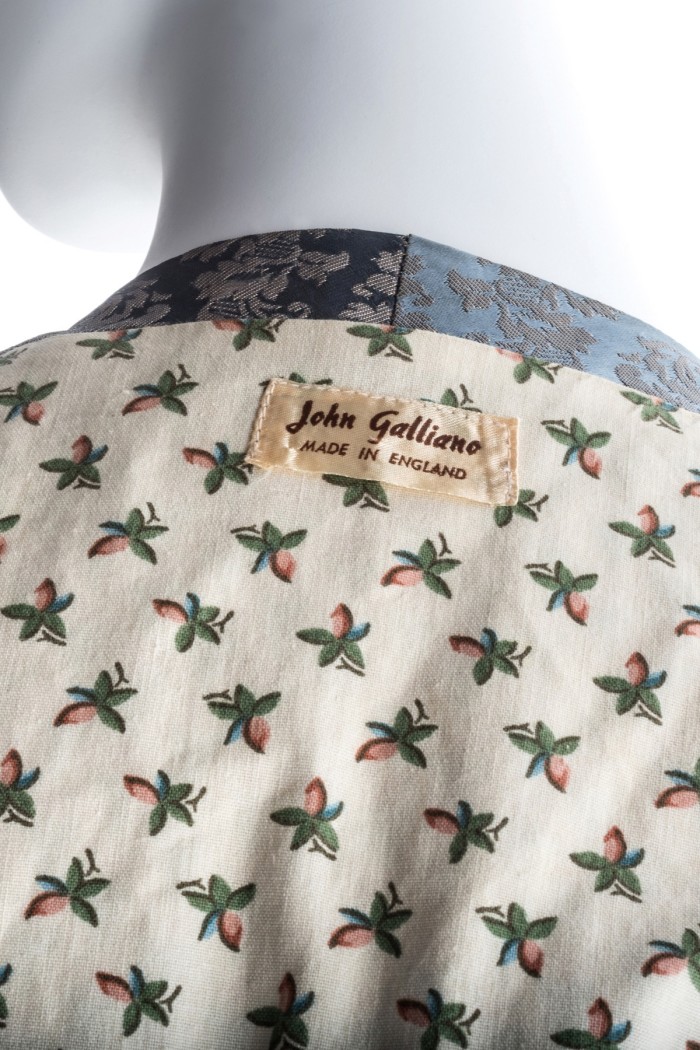Why do we collect clothes?

Simply sign up to the Style myFT Digest -- delivered directly to your inbox.
Mark C O’Flaherty was inspired to write his new book, Narrative Thread, following a conversation with the editor and gallerist Carla Sozzani – she has a collection of couture pieces by her close friend and collaborator Azzedine Alaïa. “I began to think about why we keep clothes,” says O’Flaherty, a journalist, photographer and regular HTSI contributor. “Why some and not others? How do we make that decision? How do they define us? Why do we sometimes destroy things, while we keep other things wrapped in tissue?”

Through a series of interviews with 14 individuals about their archives or personal collections, alongside photoshoots of their cherished garments, the book presents an intimate portrait of the many reasons we hold on to certain items of clothing. “Where families and lovers are involved, some items were incredibly emotional,” says O’Flaherty. “There were people I spoke to who were actively involved with certain designers and garments and there was a tremendous amount of connection there.”

The designer Charlie Casely-Hayford launched menswear label Casely-Hayford with his late father Sir Joe in 2009. The family archive – which includes the deconstructed shirts made from second world war tents that helped launch Joe’s career in the mid-’80s – is more than just their body of work. “It’s one of the few pure connections that I have with my dad,” he tells O’Flaherty. “I go into the archive every season, and that’s how I talk to him.”
John Matheson, archivist and founder of the @McQueen_vault Instagram account, began collecting Alexander McQueen ephemera such as VHS tapes and show invites after stumbling across the designer’s 1996 Dante collection on TV. “When I saw that show it was like when you flip channels to the news and there is something jarring on screen, and a new kind of reality has landed,” he tells O’Flaherty in the book.


His own impulse to collect – he now owns thousands of pieces, from McQueen’s signature denim “bumsters” to a men’s double-layered blazer from the Dante collection – comes from a fascination with the working process and a curiosity in the details. “You see a real person creating real things,” he says. “I struggle to find connections like that in the world and what’s being made these days.”
Why do we collect, though? It might be because we appreciate the objects for their timeless beauty, as with Sozzani’s collection of unworn Manolo Blahnik shoes, treasured like artworks, or because of their emotional weight. For Claire Wilcox, chair in fashion curation at London College of Fashion, preserving her father’s woollen jumpers is a way of holding on to his memory. “It is a reassurance to me,” she tells O’Flaherty. “He was once here, and he still is, on some level.”
“There is also a caretaking aspect to it,” says the FT’s menswear critic Alexander Fury, whose collection of runway pieces ranges from Christian Lacroix and John Galliano evening gowns to Tom Ford’s 1997 Gucci G-string and Vivienne Westwood’s 1991 slashed men’s denim jacket.


“There is a degree of nostalgia because it’s the people whose work I fell in love with as a kid growing up in the countryside outside of Manchester, with my nose pressed to the glass of fashion,” adds Fury. “But also, when you actually feel the weight of something and turn it inside out and see how it’s constructed, they’re kind of extraordinary as things – and I think that’s becoming increasingly rare in fashion.”
Before the age of online shopping and social media, “desire for clothing was fostered in a nuanced way”, O’Flaherty writes in his book. The rise of resale platforms such as StockX and Grailed has since turned archival menswear pieces into status symbols and made collecting a lucrative business, with items like Raf Simons’ 2001 camouflage bomber or a pair of Nike Air Yeezys attracting eye-watering sums. But for collectors such as Fury and Matheson, the value of having an archive goes far deeper than its material worth.
“For me it’s so much more than that,” says Matheson, who hopes that his collection might one day benefit a future generation of students. “It represents points in my life, and references [the] inspiration I found in certain things, and it’s the designer’s blood and sweat and tears. I want it to be as important to other people as it was to me.”
Narrative Thread: Conversations on Fashion Collections, by Mark C O’Flaherty, is published by Bloomsbury at £24.99
Comments